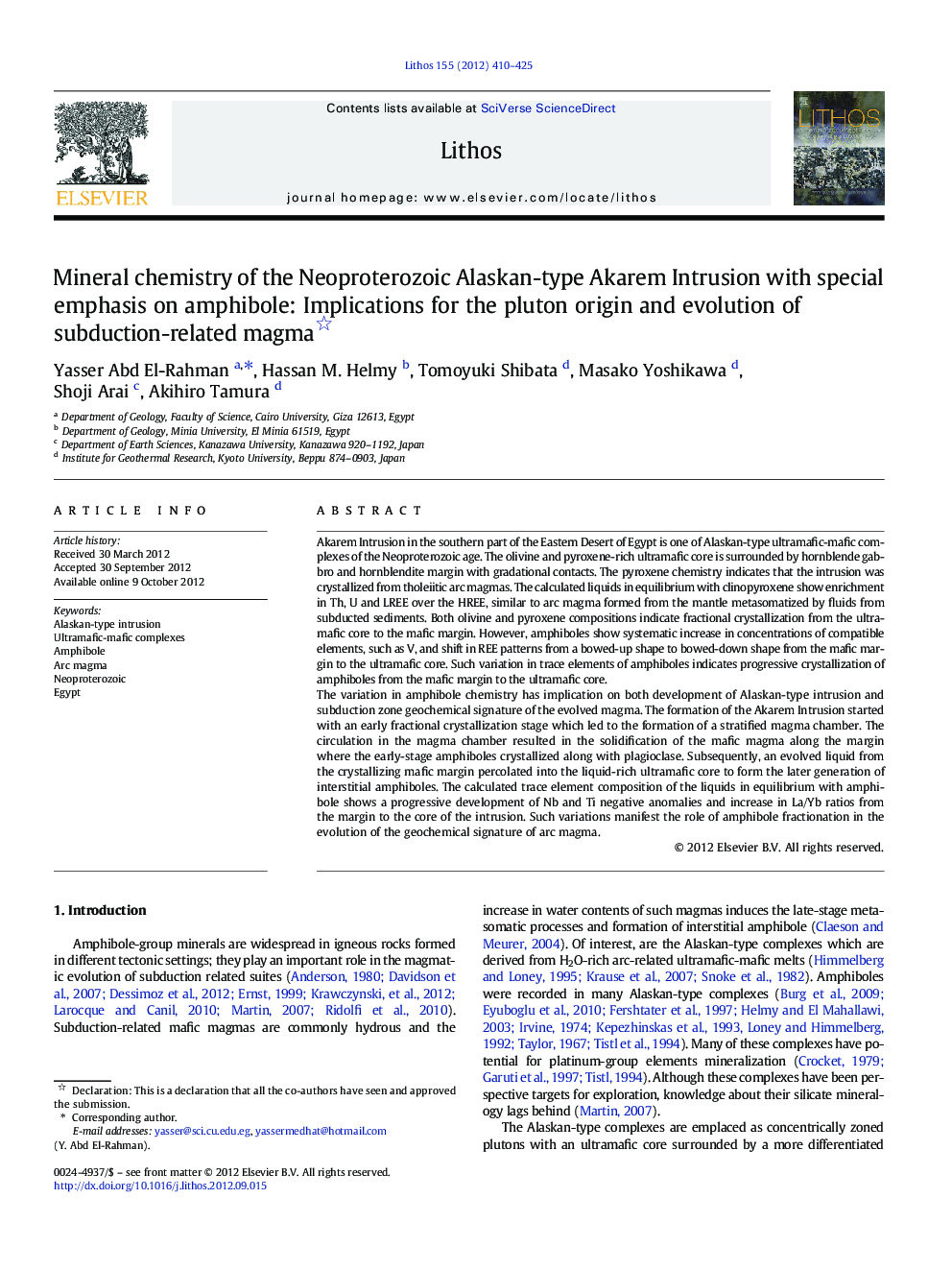| کد مقاله | کد نشریه | سال انتشار | مقاله انگلیسی | نسخه تمام متن |
|---|---|---|---|---|
| 4716367 | 1638698 | 2012 | 16 صفحه PDF | دانلود رایگان |

Akarem Intrusion in the southern part of the Eastern Desert of Egypt is one of Alaskan-type ultramafic-mafic complexes of the Neoproterozoic age. The olivine and pyroxene-rich ultramafic core is surrounded by hornblende gabbro and hornblendite margin with gradational contacts. The pyroxene chemistry indicates that the intrusion was crystallized from tholeiitic arc magmas. The calculated liquids in equilibrium with clinopyroxene show enrichment in Th, U and LREE over the HREE, similar to arc magma formed from the mantle metasomatized by fluids from subducted sediments. Both olivine and pyroxene compositions indicate fractional crystallization from the ultramafic core to the mafic margin. However, amphiboles show systematic increase in concentrations of compatible elements, such as V, and shift in REE patterns from a bowed-up shape to bowed-down shape from the mafic margin to the ultramafic core. Such variation in trace elements of amphiboles indicates progressive crystallization of amphiboles from the mafic margin to the ultramafic core.The variation in amphibole chemistry has implication on both development of Alaskan-type intrusion and subduction zone geochemical signature of the evolved magma. The formation of the Akarem Intrusion started with an early fractional crystallization stage which led to the formation of a stratified magma chamber. The circulation in the magma chamber resulted in the solidification of the mafic magma along the margin where the early-stage amphiboles crystallized along with plagioclase. Subsequently, an evolved liquid from the crystallizing mafic margin percolated into the liquid-rich ultramafic core to form the later generation of interstitial amphiboles. The calculated trace element composition of the liquids in equilibrium with amphibole shows a progressive development of Nb and Ti negative anomalies and increase in La/Yb ratios from the margin to the core of the intrusion. Such variations manifest the role of amphibole fractionation in the evolution of the geochemical signature of arc magma.
Figure optionsDownload as PowerPoint slideHighlights
► The Intrusion formed through fractional crystallization and liquid percolation.
► Amphibole crystallized from the margin to the core.
► Nb and Ti anomalies of arc magma increase with amphibole fractionation.
Journal: Lithos - Volume 155, 15 December 2012, Pages 410–425